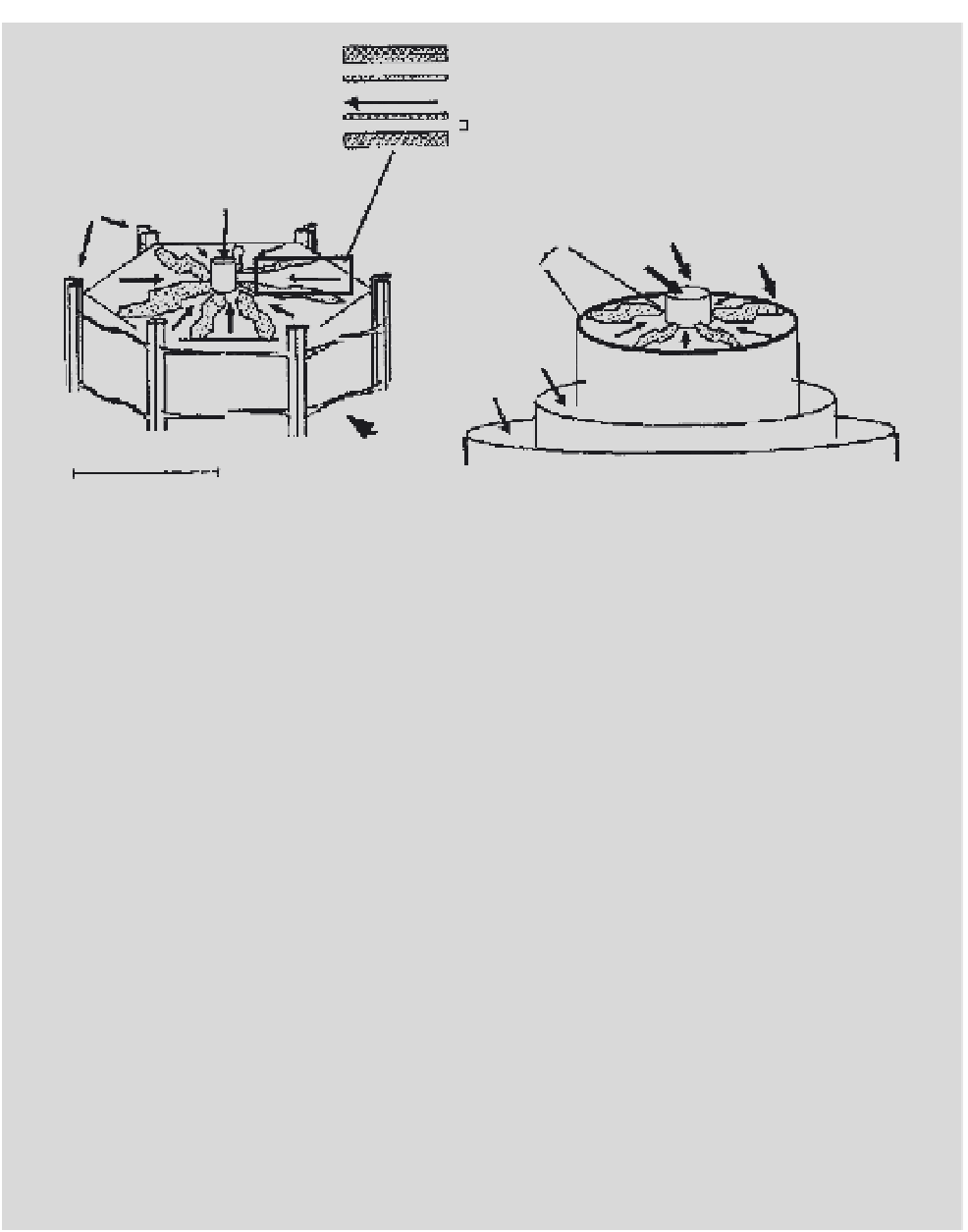Biomedical Engineering Reference
In-Depth Information
Hepatocytes
Endothelia
Blood
Space of Disse
SINUSOID
Liver Ascinus
Coaxial Fibers
CV
Tr
Inner
Fiber
Middle
Fiber
An
ICC
ECC
Gas
TPV
&
THA
500
μ
m
c.
From the figure of the liver acinus shown above and in Table 6.9, the flow rate is 10
3
cm/s in
the liver acinus. Given Darcy's law:
Q
r
¼
AL
p
½D
P
Dp
where
Q
r
is the radial flow rate,
A
is the surface area,
L
p
is the hydraulic permeability (
L
p
1
and
L
p
2
are the inner and middle fiber hydraulic permeability, respectively),
P
is pressure,
and
is osmotic pressure. If the bioreactor was filled with water and no cells, and flow is
directed outward, flowing from the inner capillary compartment (ICC) outward, through
the cell compartment to the extracapillary compartment (ECC), what would be the pres-
sure in the three compartments if
p
is 10
2
L
p
1
is 10
4
mL/min/mmHg/mm
2
,
Q
r
cm/s,
L
p
2
is 10
6
mL/min/mmHg/mm
2
? What are the pressures if each compartment flow
went in the opposite direction from ECC into the ICC?
d.
Assuming a slab configuration in the cell compartment, write a MATLAB program to give
the oxygen profile if the diffusion coefficient in the cell matrix is 10
6
cm/s
2
.
11.
Use a compartmental model to calculate the number of mature cells produced from a single cell
in a particular compartment. Use a doubling time of 24 hours (ln(2)/
and
) and a mature cell half-
life of 8 hours (ln(2)/k
d
). Assume that self-renewal can only take place in the first compartment
with a probability of 0.5. Use a total of 10 compartments and calculate the number of cells as a
function of time with the initial conditions
m
X
i
ð
0
Þ¼
0, except X
j
ð
0
Þ¼
1
and vary j between 1 and 8. Plot all curves on the same plot. Discuss the implications of your
results for transplantation.
12.
Kinetics of differentiation/feedback control in a compartmental model.
Continued

